Ever since I started writing about drum gear on the Internet, I have described cymbal sounds with words to as many people as possible. Different cymbals have such distinct sounds to them. Understanding those sounds and how they’re made will make buying new cymbals much easier.
This guide will act as a comprehensive guide to everything related to cymbals. I’ll take you through the different types of cymbals and explain all the tonal qualities you can get along with how those tones are achieved.
Bottom Line Upfront: The main types of cymbals are hi-hats, crashes, rides, splashes, stacks, and chinas. The sounds will differ due to what kind of cymbal you play. The sounds of the cymbals are also determined by how they’re made. Depending on the weight, size, and design process, you may get bright, dark, dry, warm, or trashy cymbals.
Types of Cymbals
One of the biggest distinguishing factors in cymbal sounds is the type of cymbal you’re playing. A cymbal setup will include multiple types of cymbals to get a wide array of tones and effects.
Let’s look at each cymbal type and see what the typical sounds to expect from them are.
Hi-Hats
Hi-hats are the cymbals that get placed to the left of the snare. If you have a left-handed setup, then they’re on the right of the snare. They’re one of the unique cymbal types in that they have a mechanism designed to hold two of them together.
As you have a top and bottom hi-hat that are closed together, the typical sound of a hi-hat pair is a tight striking sound. As you lift the hi-hats with the pedal, the sound opens to a more washing sound. Depending on what kind of hi-hats you have, that sound can be aggressive or mild.
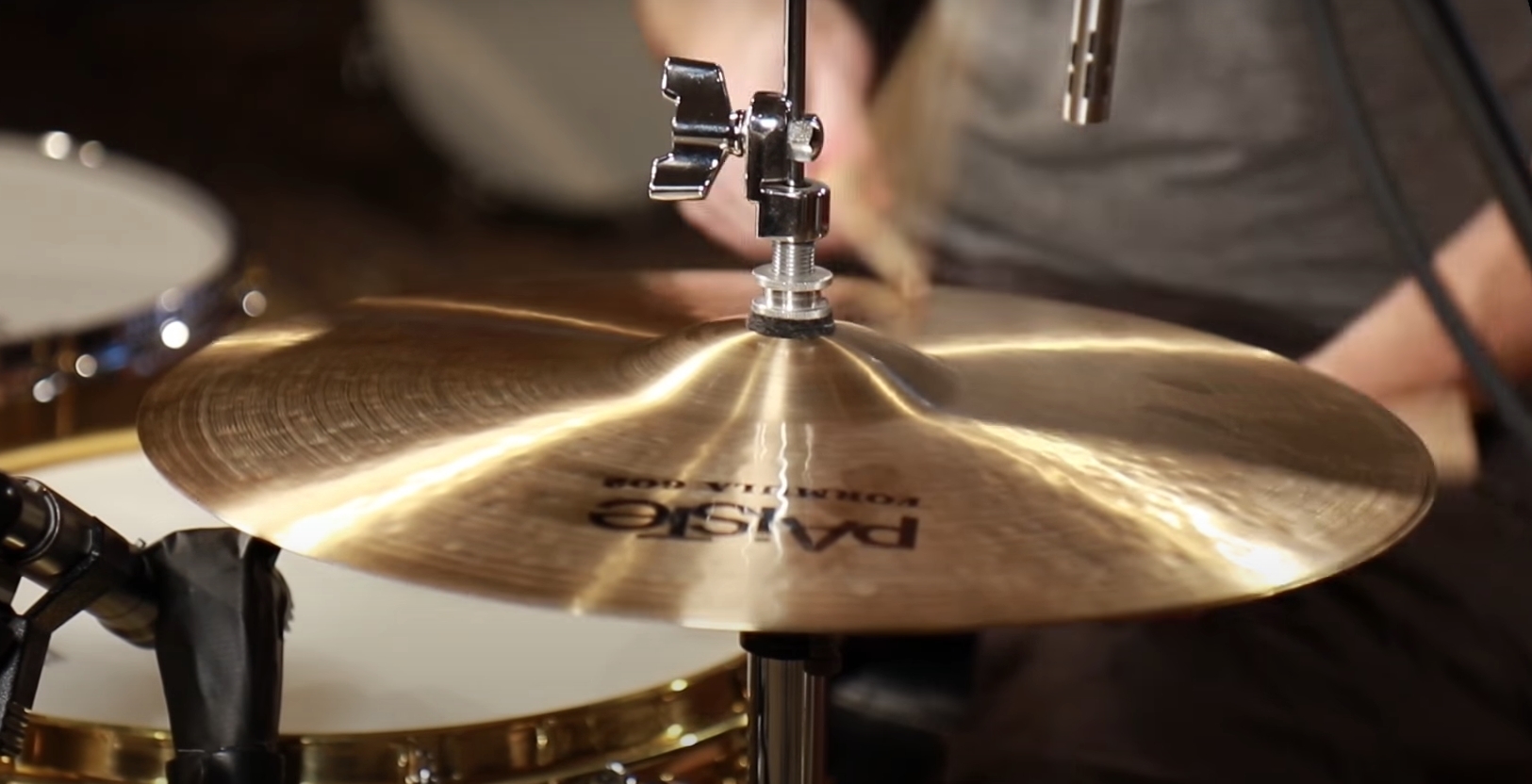
Crash
Crash cymbals are the most standard cymbals, and they’re generally the ones that most non-drummers know about. They range from 16″ to 20″, making a loud crashing sound when you strike them.
Some drummers only use a single crash cymbal, while others will have as many as ten in their drum kit setup.
Out of all the cymbal types, drummers tend to have larger collections of crashes than the others. This is because the tones of crash cymbals tend to differ dramatically across varying brands and cymbal product lines.
Getting a new crash is the easiest if you want to add an extra layer of sound to your cymbal setup.
Ride
Ride cymbals are typically the largest cymbals on a drum kit. They usually get placed on the opposite end to the hi-hat pair. While they can be crashed on like crash cymbals, they have larger surfaces, allowing drummers to play the surface the same way they would on hi-hats.
Ride cymbals have articulated tones with a bit of definition, but they’re a lot more resonant than the tight sounds of hi-hats. Some ride cymbals can be crashed to get sweet tones, while others will be too heavy, and the crashing sound won’t be pleasant. The heavier rides are mainly intended for their surfaces to be played on.
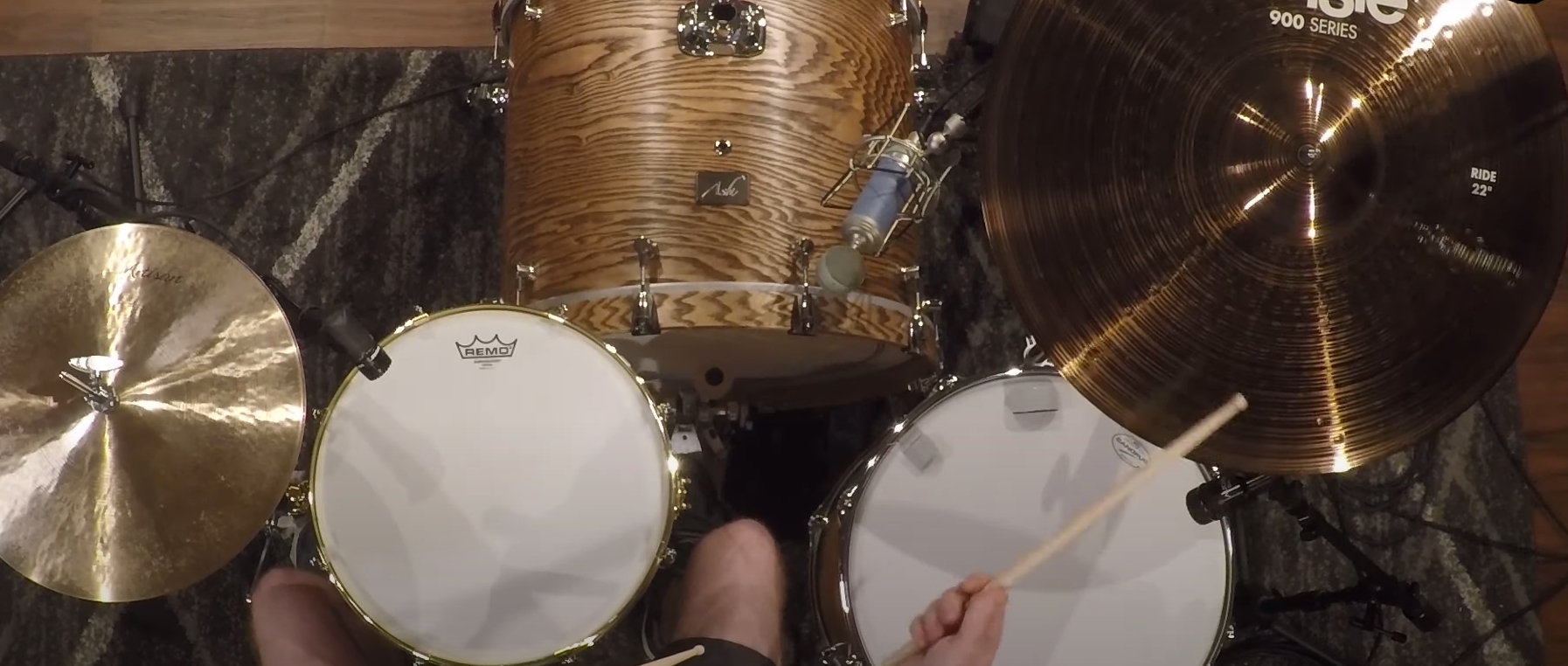
Splash
Splash cymbals are essentially crash cymbals, but they’re a lot smaller. Because of this, they have higher-pitched sounds. They also don’t vibrate for as long, giving them shorter decays.
Not all drummers are fans of splash cymbals. However, their short tones are very effective when being played in passing through drum fills.
The typical sound of a splash cymbal is explosive. That explosiveness will increase depending on how thick it is and what type of metal alloy it’s made from.
Splash cymbals range from 6″ to 12″. Anything larger than 12″ will technically be considered a crash cymbal, but crashes smaller than 16″ don’t sound great.
China
A china cymbal is one of the trashiest-sounding cymbals you can get. The appearance of a china cymbal is that of a cymbal that has been flipped inside out. Since chinas have loud and aggressive tones, they’re mostly used in heavy music.
A good china cymbal is a staple of any metal drummer’s setup. You’ll see a lot of rock drummers using them as well.
China cymbals have the largest size range out of any cymbal type. This is because any flipped cymbal will have the china effect. You could get one that is 10,” or you could get one that is 22″.
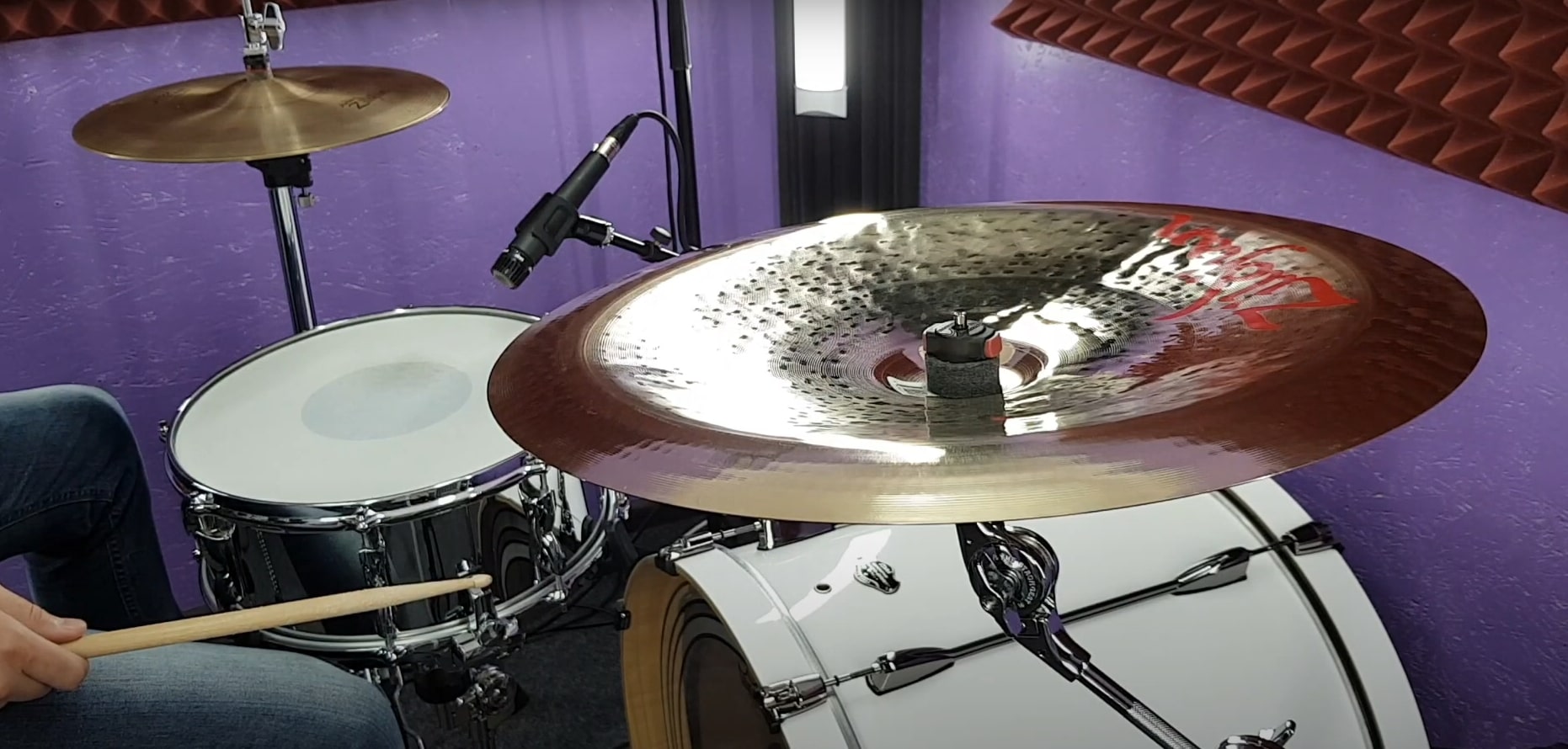
Effects Cymbals
Effects cymbals are any regular cymbals that have had an alter in their design that dramatically affects their tone. A classic example is a crash cymbal that has holes in it. While it can still be called a crash cymbal, brands will often market it as an effects cymbal due to the special effect that the holes have on the tone.
Brands like Zildjian have the FX line of cymbals. These are all effects cymbals that have unique tonal qualities, and they add a lot of depth to a cymbal setup.
Another example of an effects cymbal would be a crash with perforated edges.
Stack
A stack is a group of cymbals that have been locked together on a cymbal stand. It doesn’t matter what cymbal type these stacked cymbals are; it will always be referred to as a stack.
When you stack cymbals together, the typical sound that you can expect is a short attack with a trashy resonance. The sound will shorten even more if you tighten the cymbals as much as possible. The looser they’re tightened, the more resonance a stack will have.
Stacks can also vary in size. You could place two 8-inch splashes together or put a 20-inch crash with a 22-inch ride.
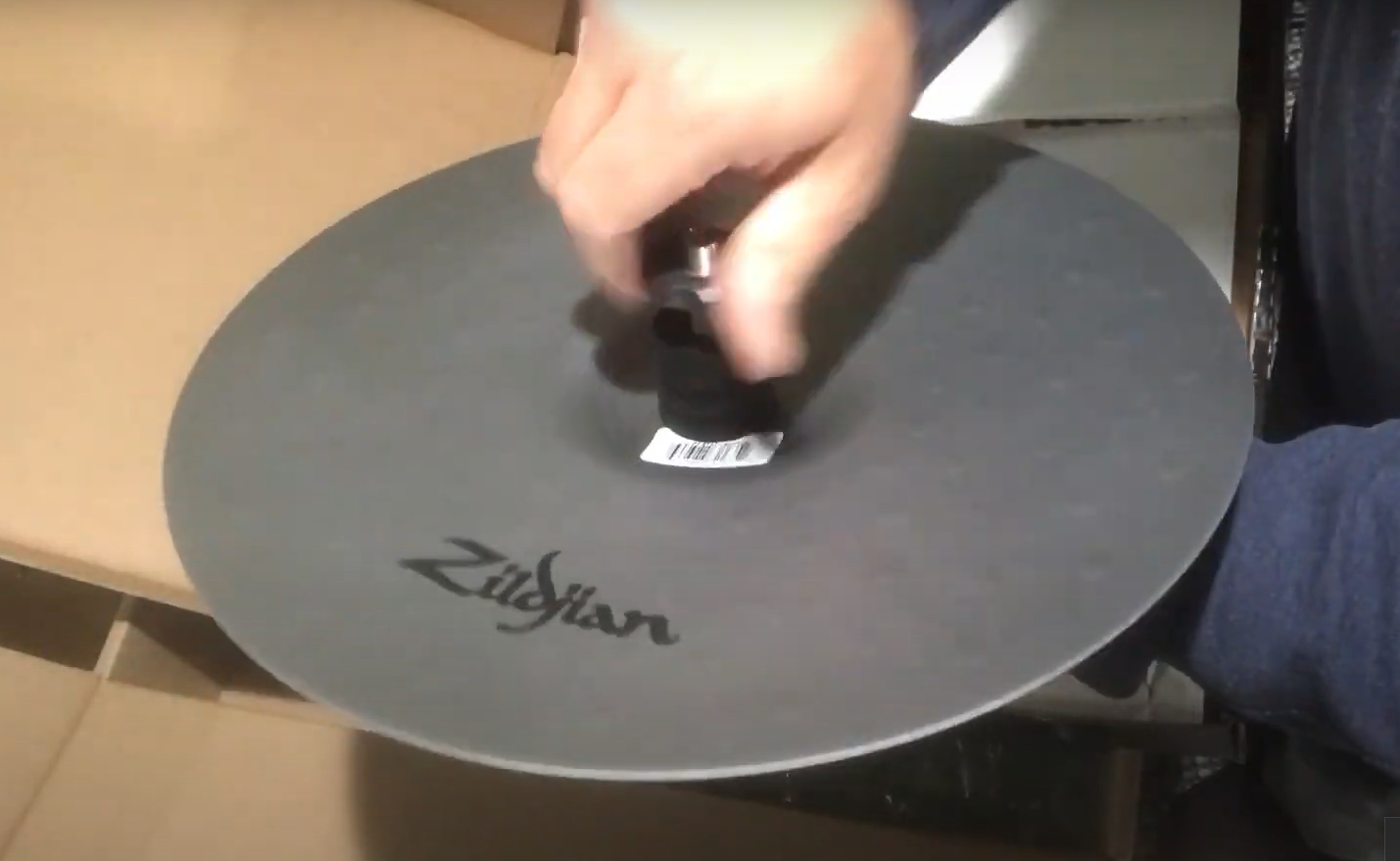
Cymbal Descriptions
Whenever you look to buy a cymbal, you’re going to either see or hear it being described with certain tonal qualities. Those tonal qualities may sound confusing at first, but they’re the perfect way of describing the sounds that come from the cymbal.
Here is a list of tonal qualities that you need to know about. Along with each section, I’ll add a video of some of my favorite cymbals that perfectly reflect that tonal description.
Bright
The tonal quality that you’ll hear most in the cymbal world is brightness. Bright cymbals have high-pitched sounds. They also cut through the music, meaning they can be heard clearly, even through a heavy mix of instrumentation.
Some bright cymbals are more explosive than others. They all keep the quality of having high-pitched sounds that are very effective within band environments.
Bright cymbals are typically used in heavy settings such as rock or metal bands. They also work well in live gig environments, no matter what type of music is played.
One of my favorite sets of bright cymbals is the Zildjian A Custom set. The Zildjian A Customs are some of the most popular bright cymbals in the drumming industry. They have a beautiful, explosive tone, and they’ve been used in so many recordings over the past three decades.
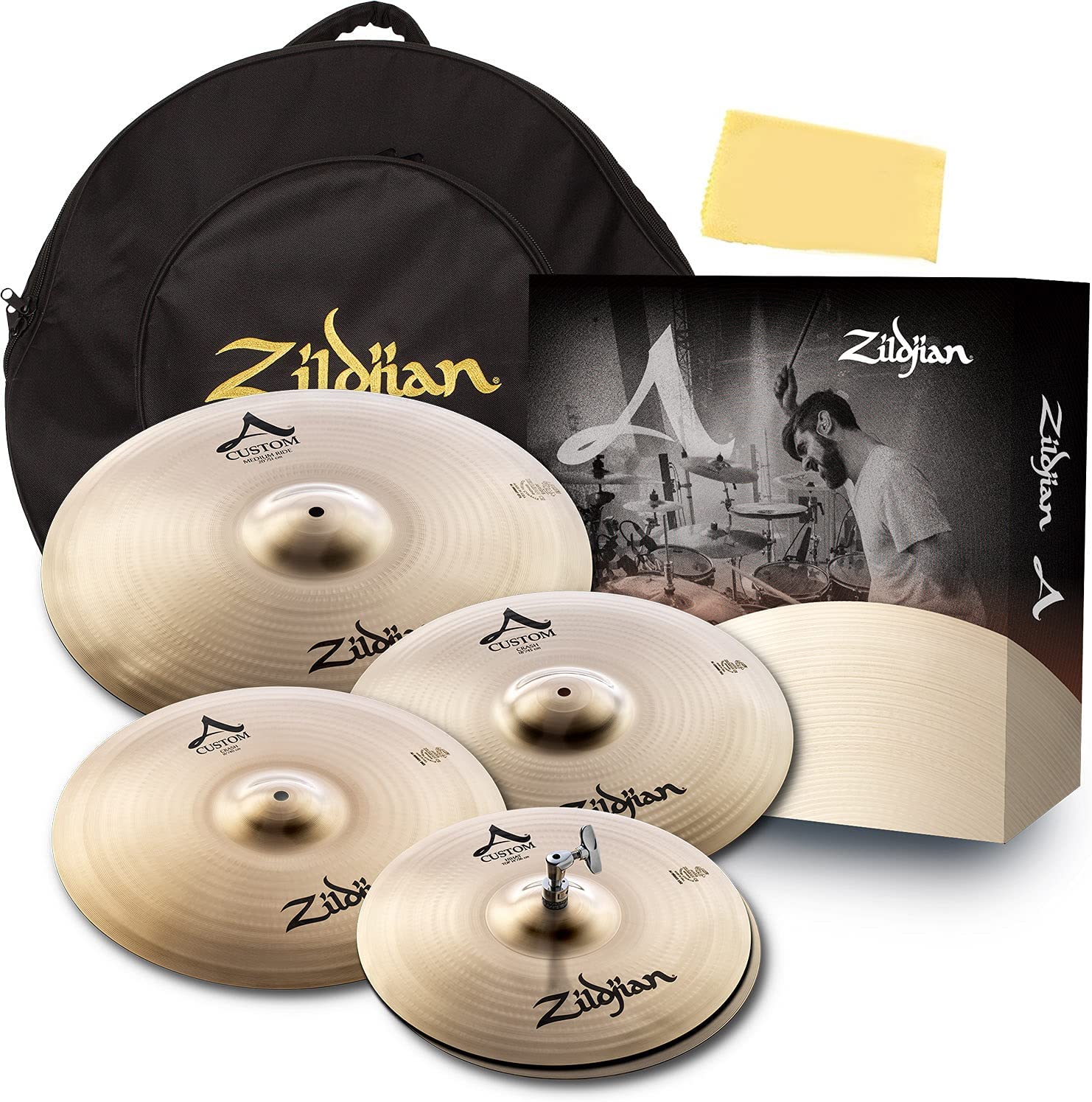
Here’s a clip of them being played. Notice how powerful they sound when being crashed hard.
Dark
The tonal opposites of bright cymbals are dark cymbals. These cymbals have low-pitched tones, and they tend to blend in with music instead of cutting right through it.
The blending nature of dark cymbals makes them ideal for low-volume environments. They work well in recording settings as well. A sound engineer will often be able to mix them easier than they would with brighter cymbals.
Some drummers will say that dark cymbals are more musical than bright cymbals. I don’t agree with that entirely, as bright cymbals have a very strong place in many musical settings. However, dark cymbals are much less aggressive.

A good example of dark cymbals is the Zildjian K Custom Dark line. I used to play in a church that had a set of these. Their dark and mellow tones were perfect for the environment, and I never had to worry about playing them too hard as they always blended well with the other instruments.
Dry
Dry cymbals have less resonance than most other cymbals. They’re cymbals that you whack hard and then listen to the sound disappear within seconds. As they have little sustain, they have a lot more articulation. This means that you can distinctly hear each stroke you play on their surface.
Like dark cymbals, they blend within music instead of cutting through it. However, dry cymbals typically have trashier sounds than dark cymbals.
Many jazz drummers use dry cymbals as they play complicated cymbal patterns, and dry cymbals accentuate those the most.
It’s quite common for drummers to have one or two dry cymbals in their setup instead of having every cymbal be a dry one. This gives them more of an interesting dynamic range to play with.
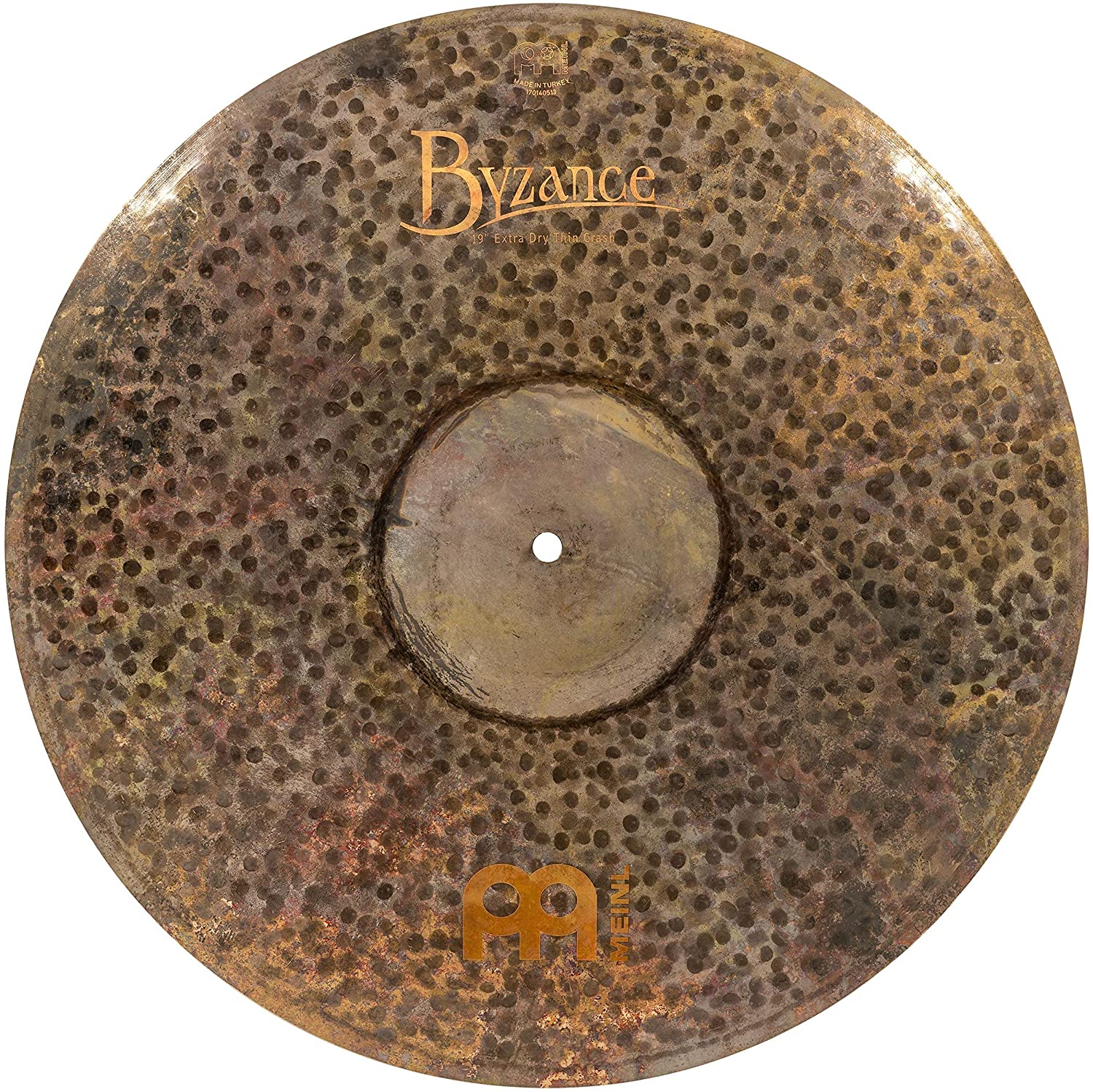
An excellent example of a dry cymbal is the Meinl Byzance Extra Dry Thin Crash. As this cymbal is so dry, I’ve found its sound to be an acquired taste. Some drummers love it; others hate it.
Warm
Warm cymbals are very similar to dark ones. Warm and dark are two qualities that go hand-in-hand. However, a cymbal will be referred to as warm because it has a soft frequency response.
The tone will be low-pitched, but it will mainly be soft. Some dark cymbals, such as the Meinl Classics Custom Dark line, are quite loud, stopping them from being warm.
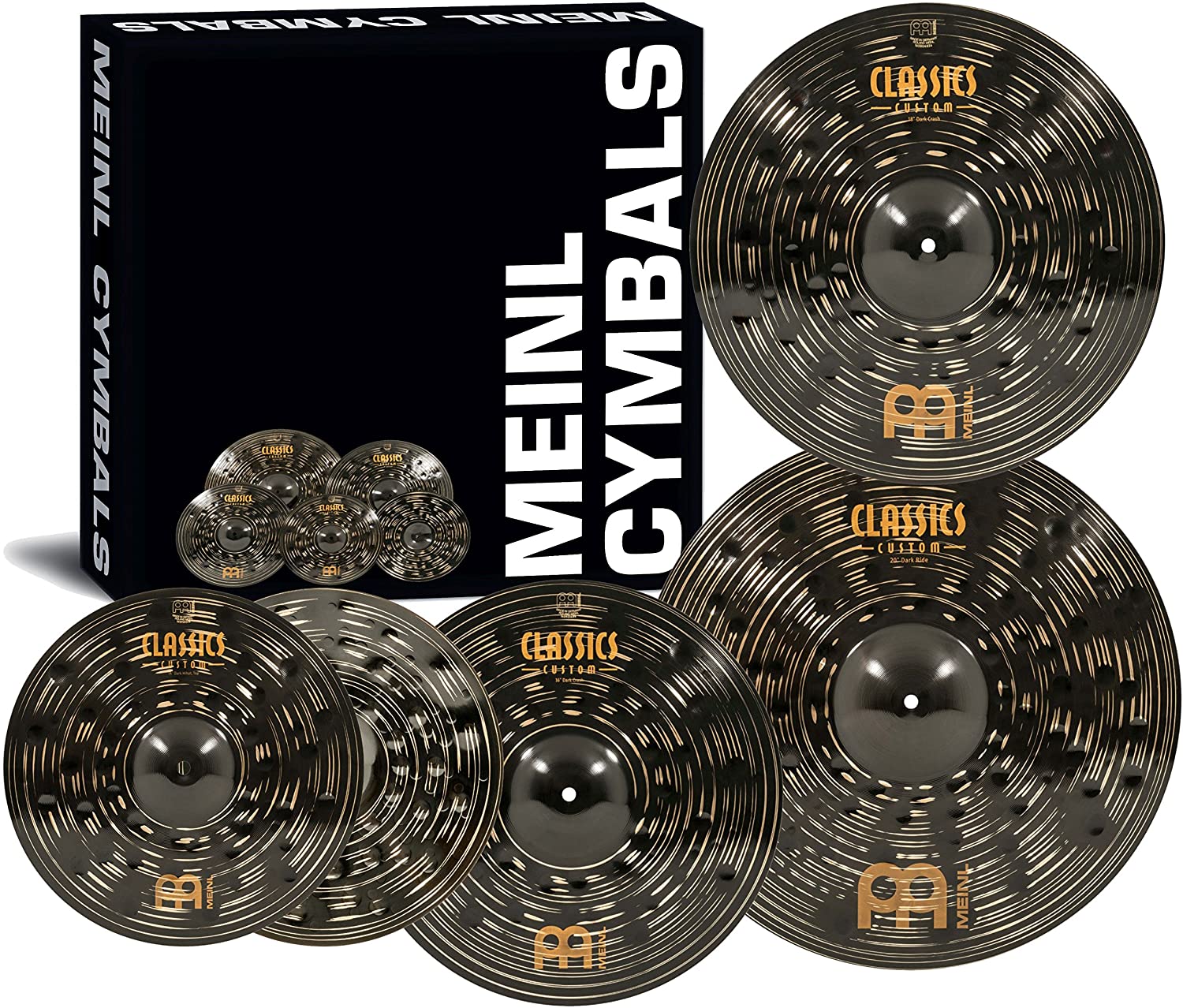
Most cymbals in the Zildjian K Custom line can be considered warm, as well as most of the cymbals in the Sabian HHX line.
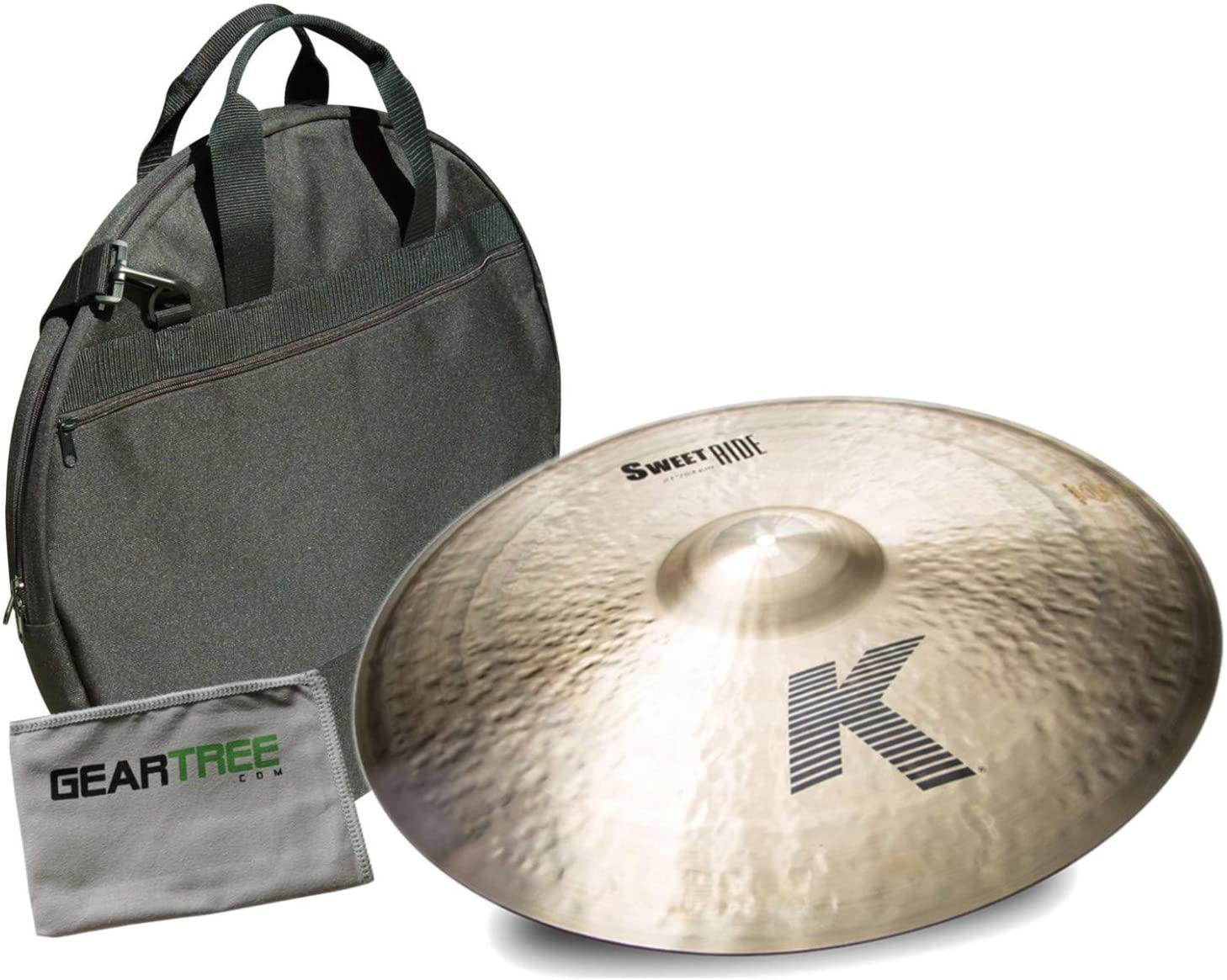
Check out this video of a 21-inch Zildjian K Custom Sweet ride being played. Pay attention to how smooth the tone is, perfectly representing the warmth found in many other cymbals.
Trashy
While dry cymbals have a hint of trashiness, some cymbals are made to sound as trashy as possible. A trashy cymbal will have a very raw sound that is dirty in the tonal spectrum.
If you play a trashy cymbal on its own, you’ll think that it sounds quite bad. However, having trashy cymbals being played in the context of a full drum kit brings a very interesting sound.
The trashiest-sounding cymbals are typically chinas. They have incredibly loud sounds that are full of unpleasant overtones. They’re perfect for use during metal breakdowns and other loud song parts.
Cymbals with holes in them will also sound trashy. They’re commonly referred to as trash crashes.
Here’s a video of Zildjian K Custom Special Dry cymbals with holes being played. They have a mixture of dryness and trashiness.
Articulate
Articulation refers to how clean a cymbal sounds when you strike it on the surface. Some cymbals have incredibly clean tones, while others are too washy to hear each distinct stick strike.
Typically, bright cymbals are the most articulate. Since they have the thickest structures, playing them on the surface produces a loud and cutting sound. However, drummers may want the articulation but not the brightness.
In that case, you’d need to find a darker or drier cymbal that has good articulation. Dry cymbals are usually the better option for that.

The best example of an articulate cymbal that I can think of is the Meinl Transition Ride. It was designed to be washy but have enough articulation to be heard when playing on the surface.
Attack
Attack refers to how quickly a cymbal responds when being struck. Some cymbals will make a sound much faster than others. Think of how a splash cymbal makes a quick sound as you hit it. Now think of how a ride cymbal takes longer to open up when you crash on it.
Smaller cymbals have more attack than larger ones. Brighter cymbals also have more attack than darker ones.
It works best to have a mixture of cymbals with fast and slow attacking tones. If you only have cymbals with quick attacking tones, your setup may sound too aggressive.
Glassy
When a cymbal is glassy, it has a shimmering sound that rings for a bit after you hit it. I usually find that cheaper cymbals are quite glassy, and it’s not a tonal quality that I’d personally want in any professional setting. However, some drummers I know love it.
Most glassy cymbals are also very bright. The glassy after tone is the added addition to the bright attacking tones.
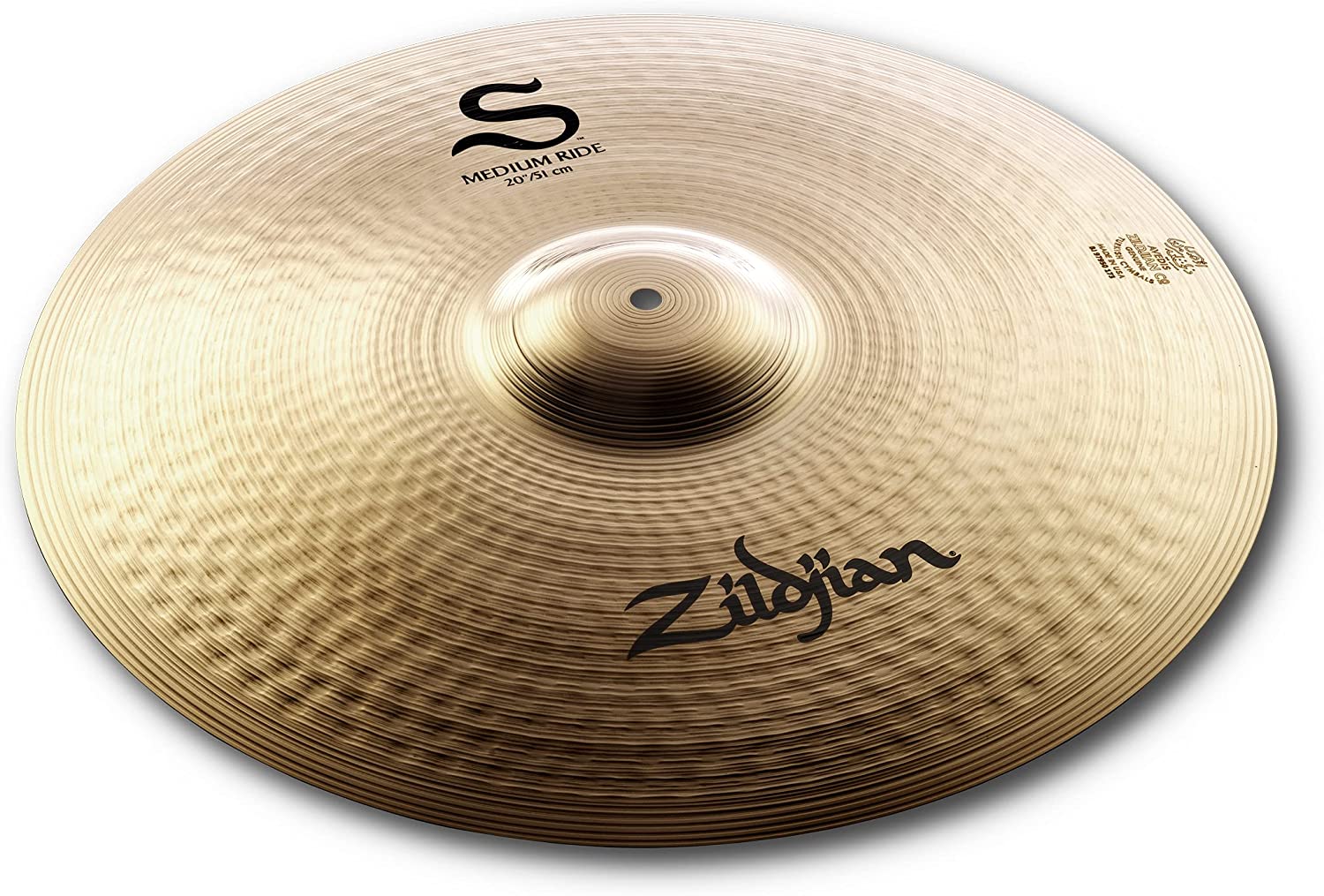
A good example of glassy cymbals comes from the Zildjian S Family. These intermediate cymbals have a high-pitched shimmer when you hit them, making them some of the glassiest cymbals that I know of.
Resonant
Resonance refers to how long a cymbal rings. Larger cymbals are typically more resonant than smaller ones. Brighter cymbals are also more resonant.
The key factor in resonance is how long the cymbal vibrates. As larger cymbals have more surface area, they vibrate for longer. Brighter cymbals are thicker than most other cymbals, also making them vibrate for longer.
If you want a cymbal with plenty of resonance, you should be looking at options with bright tones.
If you want resonance but not brightness, then look for cymbals of larger sizes. I love resonant cymbals, but I’m not the biggest fan of bright cymbals. So, I use a 20-inch crash cymbal that rings for longer than a 16 or 18-inch crash would.
How Cymbal Tones Are Affected
All the qualities that I’ve mentioned above are caused by the way cymbals are created. When a cymbal manufacturer makes a cymbal, they’ll have the know-how of making it to achieve specific sounds.
Let’s look at how the design of a cymbal affects its tone.
Size
The size of a cymbal is the most obvious way of establishing how it’s going to sound. Smaller cymbals will have higher-pitched tones, while larger cymbals will have deeper tones.
However, that isn’t the only quality that affects pitch. You can get small cymbals that are the same size, but one will sound deeper than the other. In that case, there are more factors involved that affect the tone. However, size is always the first thing you should look at as it’s the most obvious defining factor.
I’m not the biggest fan of bright and high-pitched cymbals, and that’s why you’ll mostly see me using 15-inch hi-hats and 20-inch crashes.
Weight
Another big defining quality of a cymbal is its weight. The heavier a cymbal is, the louder it will sound. Heavier cymbals are always thicker and chunkier. They vibrate quickly when you hit them, and that’s what causes the explosive and bright tone.
You don’t need to hit heavy cymbals incredibly hard for their volume to be prominent. This is also why using heavy cymbals isn’t a good idea in quiet environments. Even if you play them lightly, their output volume is going to be high.
Thinner cymbals vibrate slower, causing their tone to be deeper and softer. I love thin cymbals as you can lay into them without worrying about overbearing sounds.
Hammering
When cymbals are made, they get hammered in varying patterns to produce different tonal qualities. Cymbals that don’t have heavy hammering patterns have purer tones than cymbals that have been hammered quite a bit.
Intense hammering patterns produce cymbals that have more complex sounds. They’re usually higher-end and more expensive cymbals.
Some of the more expensive cymbals available have been hand-hammered. They’re more expensive as more work has been put into them compared to being hammered by an automated machine.
Trashy cymbals have been hammered the most. The more hammering that gets done, the trashier the cymbal starts to sound.
Holes and Add-Ons
Some cymbals will have holes drilled into them. The more holes a cymbal has, the trashier it’s going to sound. It will also have less resonance, which makes sense as there is now less cymbal area to vibrate.
Other cymbals will have things built into them, such as rivets. Rivets will cause a cymbal to resonate for longer as the rivets will continue to vibrate once the cymbal has stopped.
Metals Used to Make Cymbals
Varying alloys are used to make cymbals. Some are cheaper than others, and the main reason you get cheap cymbals is that more affordable metals are used.
Here’s a list of all the cymbal metals, along with examples of popular cymbals that are made from them:
Brass
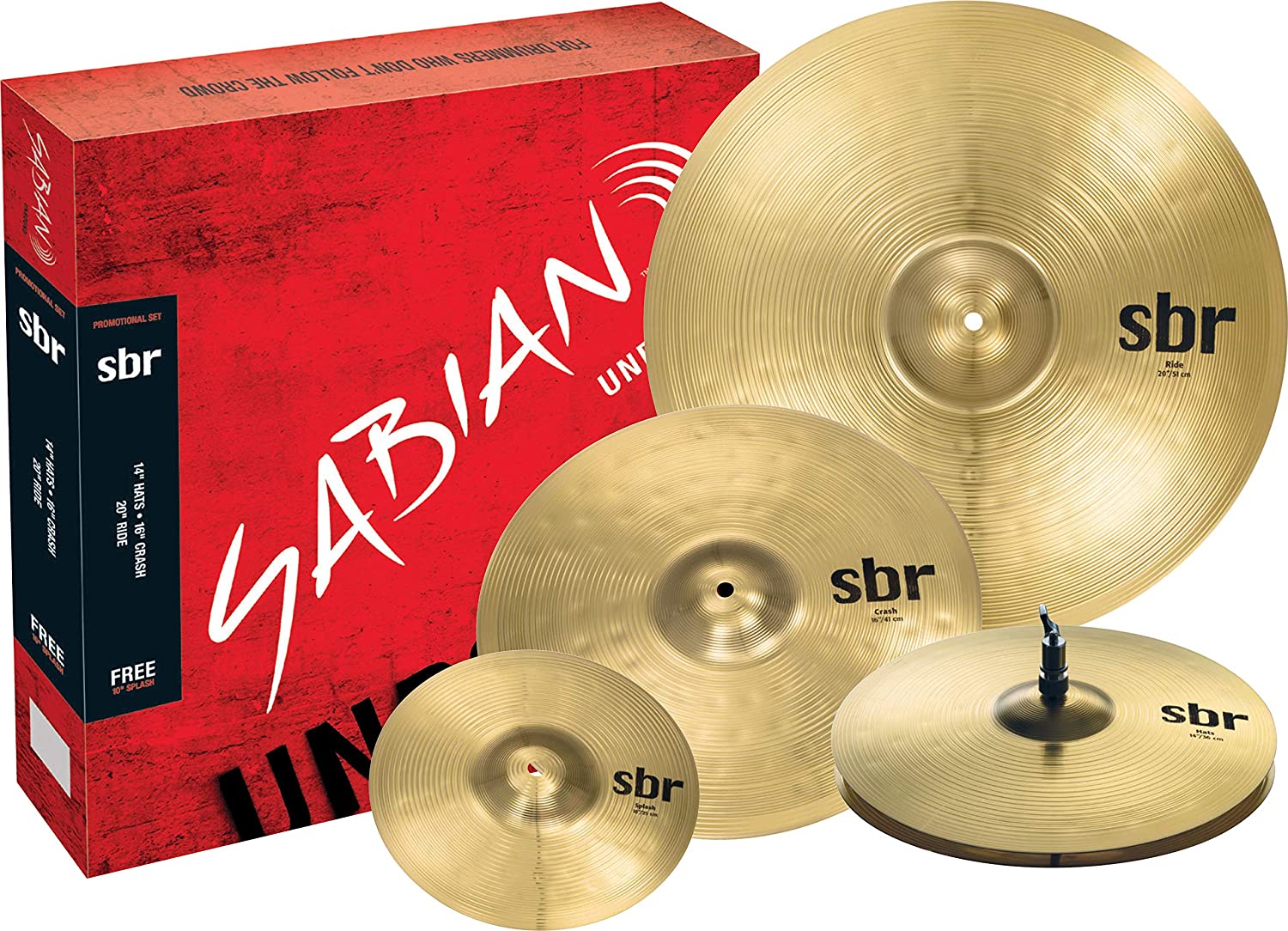
Brass is what all the cheapest cymbals are made from. It’s one of the least musical metals to use, so you’ll find that brass cymbals aren’t very dynamically responsive.
There are a few examples of high-tier brass cymbals, such as the Ankh Series from A&F, but some will still find even those to be unpleasant to listen to.
If you buy a cheap drum kit that has cymbals with no brand on them, the chances are high that those cymbals are made from brass.
Here is a list of cymbals made from brass:
B8 Bronze
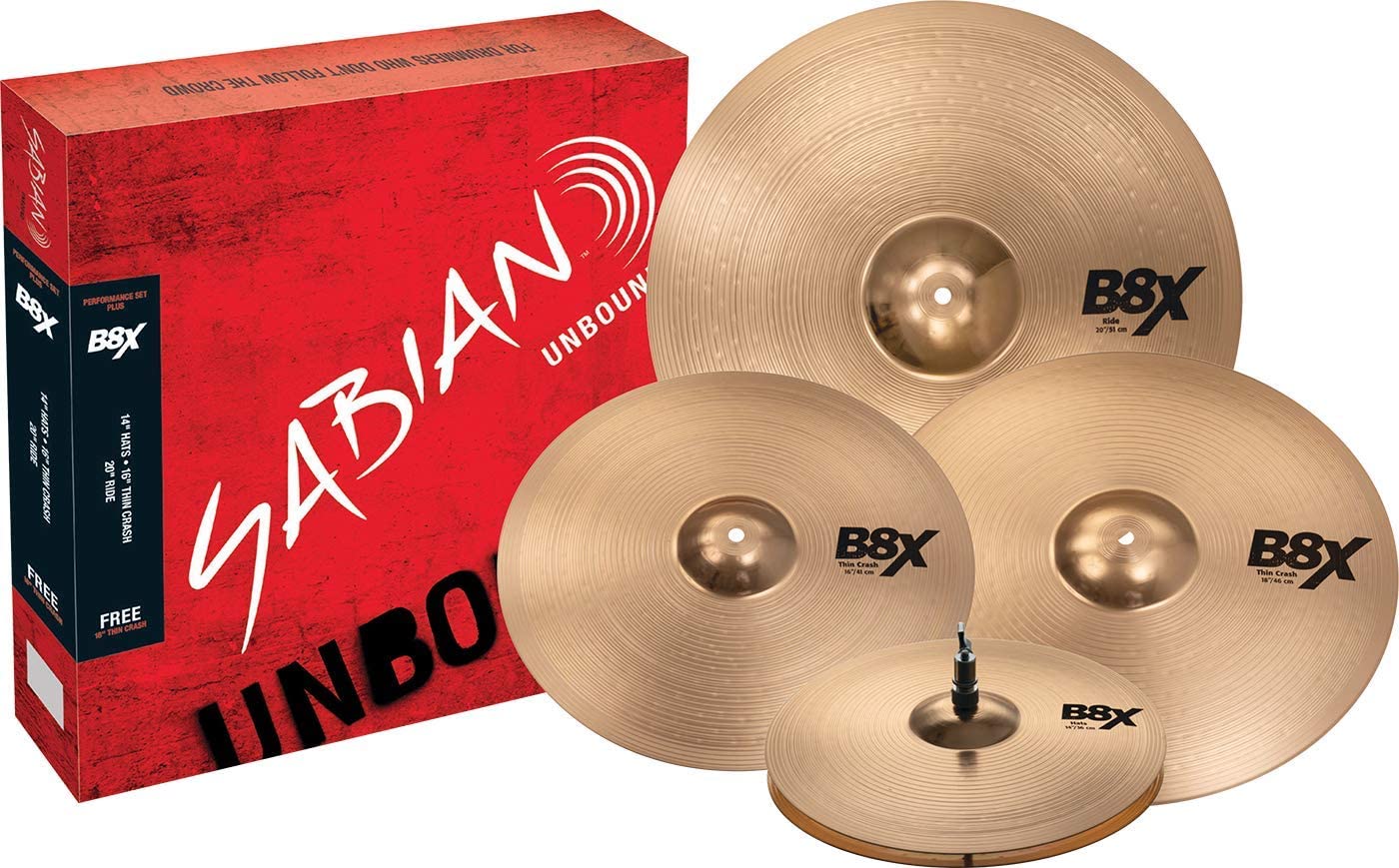
Higher-quality entry-level cymbals are made from a B8 bronze alloy. I used to teach on a set of Sabian B8s, and they sounded relatively decent. They were perfect for beginners. If you need cheap cymbals, I’d suggest getting ones made from B8 instead of brass.
Most B8 cymbals have bright tones with a fair bit of cutting power. They’re still not as dynamically responsive as many drummers would like, though.
Here’s a list of cymbals made from a B8 alloy:
B10 Bronze
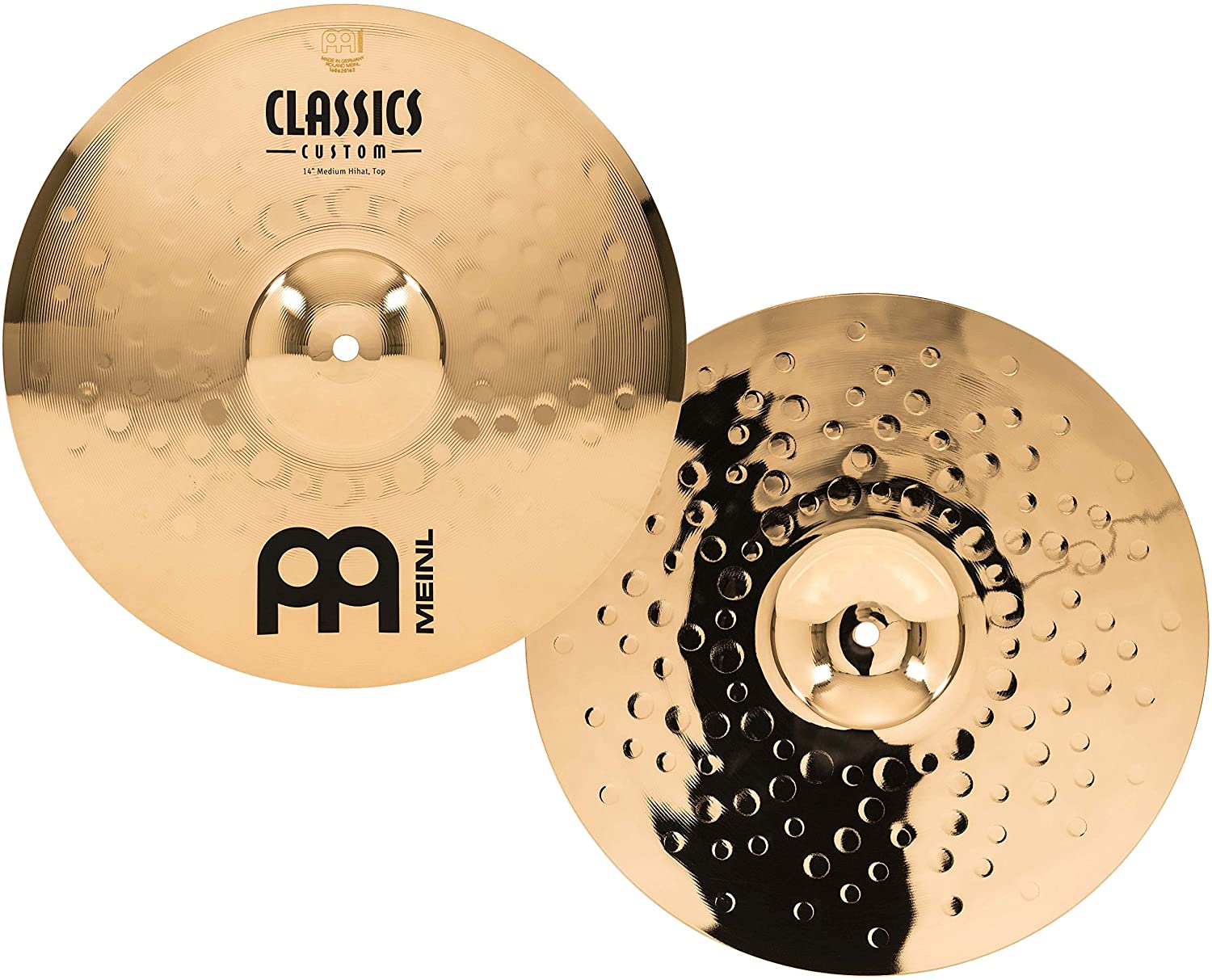
Many drummers consider B10 as a slightly higher-quality alloy than B8. The Meinl Classics Custom lines are some of the only cymbals that you can easily find that are made from this alloy.
Those cymbals are considered intermediate cymbals, whereas most B8 cymbals are considered entry-level. However, I know a few drummers who prefer the sound of B8, especially from Paiste cymbals.
B12 Bronze
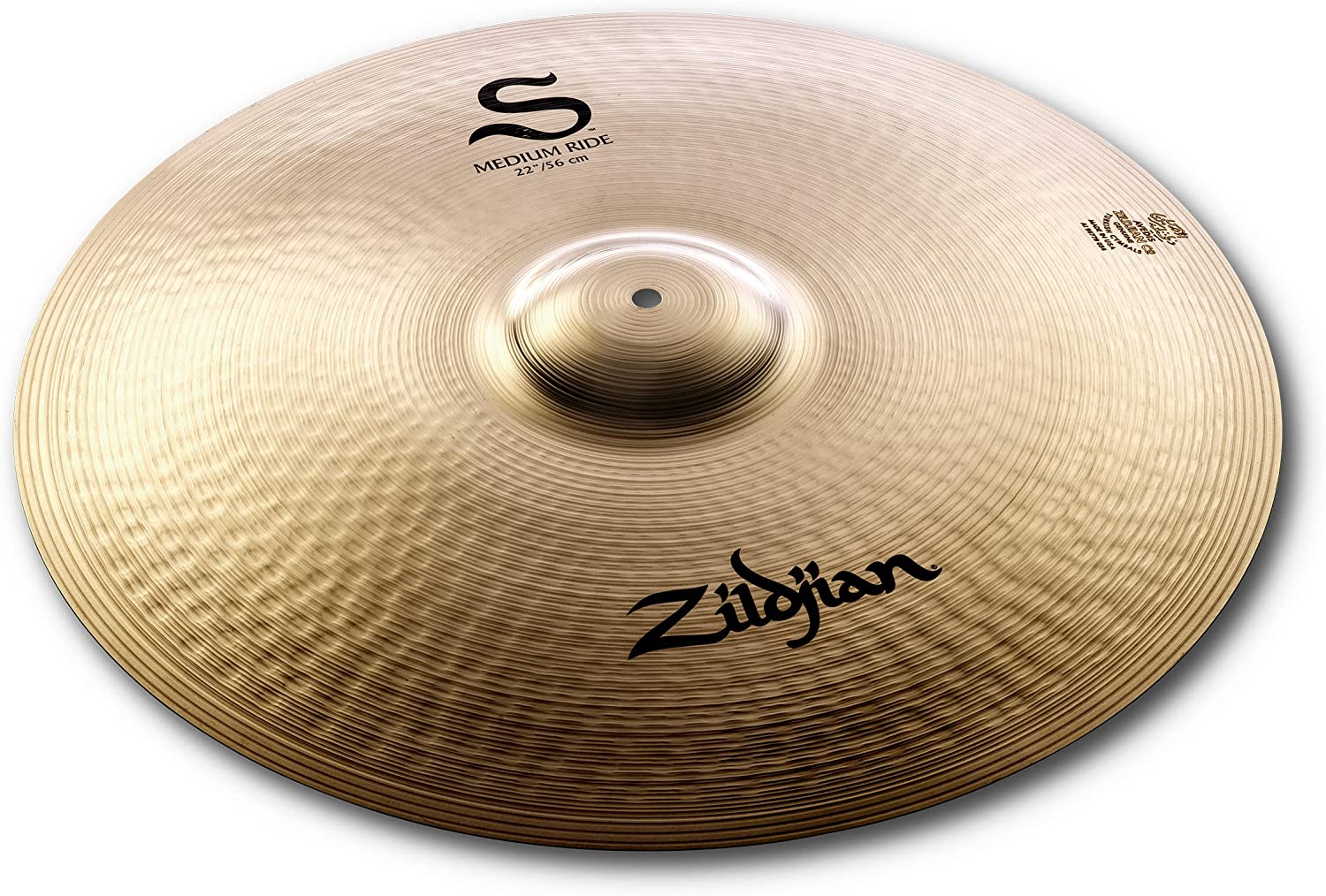
Many intermediate cymbals are made from B12 bronze. The sound you get here is more shimmery than the previous alloys, making it an excellent option for making brighter cymbals.
The two popular B12 lines that I know of are the Zildjian S cymbals and the Meinl Pure Alloy cymbals. The Pure Alloy Custom cymbals are also made from B12.
These cymbals make great options for rock and metal drumming, thanks to their shimmering tones. They also work fairly well in stacks as they add a unique sense of bite.
B20 Bronze
B20 bronze is the star of the show when it comes to cymbal materials. All the best cymbals available are made from B20. They have complex tones that are both musical and incredibly dynamically expressive.
The list of cymbals that are made from B20 is enormous, but here are a few popular ones to mention:
- Sabian HHX
- Zildjian K Custom
- Meinl Byzance
- Paiste Signature
There are dozens of varying lines of cymbals offered within each of those names, and all of them are made with B20 bronze.
FAQs
Answer: Cymbals sound different because they are designed in varying ways. The tone of a cymbal depends on its size, weight, thickness, metal type, and how it was constructed.
When cymbals are made on an automated line, they tend to sound similar if you compare the same types of cymbals. However, cymbals that have been hand-hammered and handcrafted will sound different, even if they’re the same cymbal.
This is one of the best things about buying high-end cymbals that have been personally made. They’ll sound unique and make your drumming sound unique as well.
Answer: Most brass cymbals are cheap and intended for beginners. Brass is the most undesirable metal for most drummers as brass cymbals typically sound flat and unmusical.
However, there are a few brands that have attempted to make high-end brass cymbals. One of the few lines that I know of is the Ankh cymbal line from Sabian. Sabian collaborated with A&F to create these.
They sound quite dry and would work fairly well in jazz settings. However, I can’t see them being loved by many drummers. They lean more on the trashy side, and that is an acquired taste. If someone were to choose between an Ankh cymbal and a Sabian HHX cymbal, I’m betting they’d choose the HHX.
Answer: There are seven main types of cymbals you can buy. These include hi-hats, crashes, rides, splashes, chinas, stacks, and bells.
Not every drummer uses all seven types in their setup. Most drummers are perfectly happy with only using hi-hats, crashes, and a ride cymbal.
However, you can create some interesting sounds when branching out and using cymbals of different types.
One of the cymbal types that has gained in popularity in recent years is the cymbal stack. It has started to become a staple in modern pop music, and many other styles call for the use of one as well. You’ll often see drummers using these more often than splashes or chinas these days.
Answer: No. It’s perfectly okay to like some qualities and not like others. I’m not the biggest fan of bright cymbals, so I don’t use them. I’d need to use them if I was a rock drummer, though. Using appropriate cymbal sounds is the best way to benefit the style you’re playing.
One of the least liked cymbal qualities is trashiness. The two types of cymbals that have trashy tones are chinas and cymbals with holes in them. While you’ll see many drummers using these, you’ll find even more drummers that choose not to use them as the trashy sounds are a bit too aggressive.
Answer: Not entirely. Every cymbal brand has a long list of cymbal products that cover all the tonal qualities that you can get in cymbals. However, I’d argue that Meinl has a larger number of dry cymbals than any other brand.
When I think of a dry cymbal, Meinl is always the name that pops into my head. Their Byzance Extra Dry line is a highly sought-after line for drummers who want a dry cymbal in their setup.
Conclusion
Understanding all the qualities that cymbals may have makes buying new cymbals a lot easier. You’ll find yourself leaning toward certain preferences, and that will guide your decision in what to choose.
If you play in bands regularly, you should get cymbals with qualities that suit the style of music you play. Bright cymbals are good for rock, and dark cymbals are good for jazz. That statement is a bit oversimplified, but it shows the two extremes of what you should be looking for.
Every cymbal brand has a long list of products that cover all these qualities. Listen to as much as you can and decide which cymbal qualities you like the most.
For more interesting reading on drum gear, check out the following articles:

